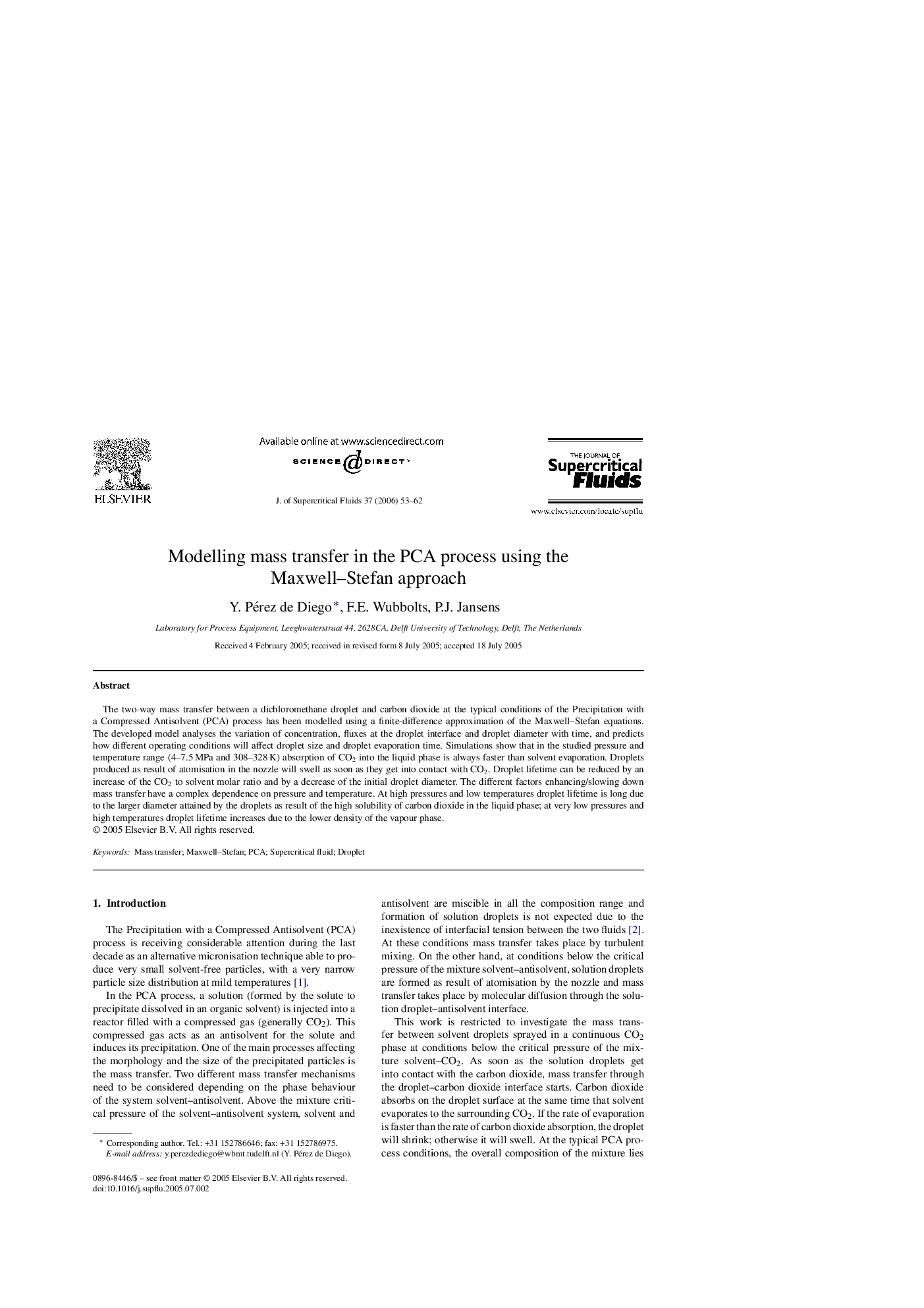| Article ID | Journal | Published Year | Pages | File Type |
|---|---|---|---|---|
| 232327 | The Journal of Supercritical Fluids | 2006 | 10 Pages |
The two-way mass transfer between a dichloromethane droplet and carbon dioxide at the typical conditions of the Precipitation with a Compressed Antisolvent (PCA) process has been modelled using a finite-difference approximation of the Maxwell–Stefan equations. The developed model analyses the variation of concentration, fluxes at the droplet interface and droplet diameter with time, and predicts how different operating conditions will affect droplet size and droplet evaporation time. Simulations show that in the studied pressure and temperature range (4–7.5 MPa and 308–328 K) absorption of CO2 into the liquid phase is always faster than solvent evaporation. Droplets produced as result of atomisation in the nozzle will swell as soon as they get into contact with CO2. Droplet lifetime can be reduced by an increase of the CO2 to solvent molar ratio and by a decrease of the initial droplet diameter. The different factors enhancing/slowing down mass transfer have a complex dependence on pressure and temperature. At high pressures and low temperatures droplet lifetime is long due to the larger diameter attained by the droplets as result of the high solubility of carbon dioxide in the liquid phase; at very low pressures and high temperatures droplet lifetime increases due to the lower density of the vapour phase.
